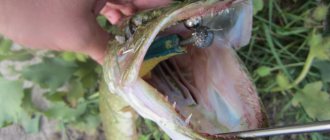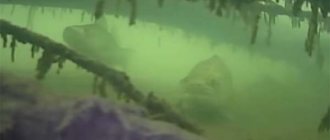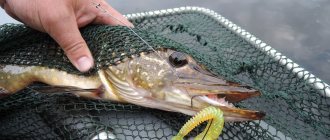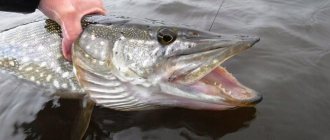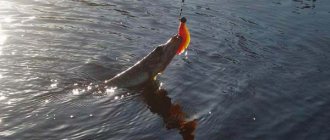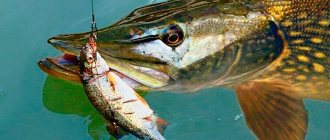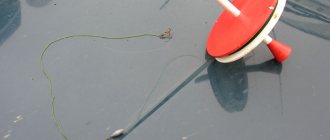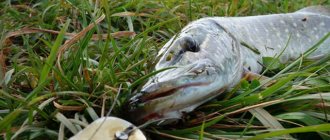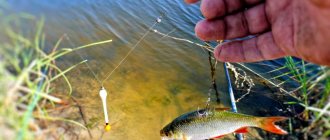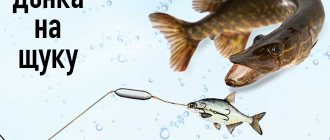Pike fishing in March. Previously, March was associated with ice fishing, since many reservoirs had fairly thick and durable ice almost until the end of the month. Now, due to climate change, everything has changed. If there is an ice crust somewhere, then it is not possible to go onto it.
However, avid fishing enthusiasts are not at all upset by this situation. There is no way to use winter gear, so we pick up a spinning rod! March is a great time for pike fishing. Due to the same weather disasters on many rivers and lakes, the predator manages to spawn before the arrival of calendar spring.
In recent years, anglers have increasingly come across “empty” pike (without caviar) already in the second half of February. After spawning, this fish, like any other, experiences an urgent need for a large amount of food (in order to restore strength). Even if the predator’s spawning has just begun, there are still chances for success, because individuals of different ages spawn at different times. As a rule, larger pikes spawn first, then medium ones, and small specimens try to continue the genus last. It is thanks to this situation that pike fishing in March often produces good results. Only unstable weather can ruin fishing.
How does pike behave in March?
With the appearance of the first thawed patches, the pike rushes to get enough oxygen, and, hungry for food, rushes to the bait. Where the first thawed patches appear, you can find not just one fish, but schools of hungry fish. In the spring, pike go to spawn, but during this period you can catch a male; in addition, in different regions of Russia you can observe the following pattern: first large fish go to spawn, then medium-sized ones, and finally small ones. In some places, pike of all sizes spawn at the same time. Before the onset of spawning, pike tries to gain strength, so during this period it can be found in different places in the reservoir.
Jig lures
In March, all kinds of silicone baits are used, from vibrotails to various crustaceans. When fishing with jigs in March, first of all you need to pay attention not to what silicone bait you chose, but to the color of the bait and the wiring technique.
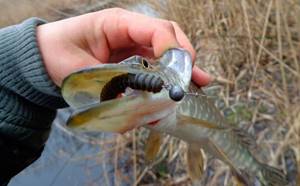
Dark-colored baits that do not cause an irritable reaction in the predator perform best in March; if the pike refuses to take the bait, then you should first experiment with bait, and then move on to changing the color of the silicone to lighter and more aggressive colors.
Is it possible to catch pike in March?
According to the new rules, in most regions of Russia the ban on pike fishing is in effect from January 15 to February 28, therefore you can fish in March. However, fishing rules tend to change, so it would be a good idea to first clarify the information for your region.
For Belarus, on the contrary, the ban is valid from March 1 to March 31, and local fishermen are forced to miss the pike bite in early March.
Lures - what does the March pike take?
In recent years, anglers have considered the most preferred baits for catching pike in March to be all kinds of wobblers, twisters, and vibrotails, which in their size parameters range from three to five centimeters. If you fish for pike in March in sunny and clear weather, then it is better to use dark variants of spinners or twisters.
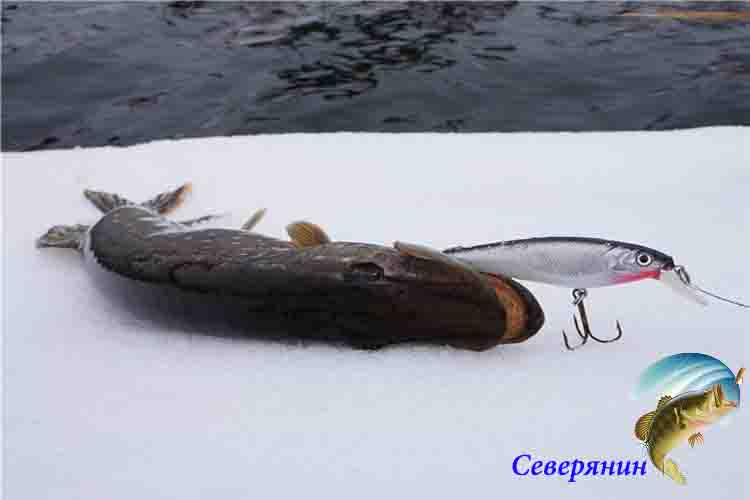
In the evening, but still before dark, it will be better to catch pike with shiny spinners, vibrating tails of yellow or white shades. In cloudy weather, pike behave more actively; twisters or vibrating tails should be used here.
At the same time, experienced fishermen have a strong opinion that March pike fishing is better done with baits of smaller sizes. As for the varieties of March pike bait - almost any type of pike bait is suitable, but, of course, the best bait will be live bait, or worms and maggots, bloodworms.
Where to look for pike in March
Let's consider options for finding pike depending on the type of reservoir.
On the river
Enterprises (state district power plants, reservoirs) discharge excess water into rivers, and the riverbed, which is not yet completely free of ice, is filled with water. This is the period when fish are hungry - you can go out on a boat along the water-filled riverbed with a spinning rod.
On the small river
Shallow rivers are winding, with a narrow channel. Even if the ice has melted, it is better to fish on such rivers from the shore. Small and medium-sized predators accumulate in reeds, creeks, and snags - stay in these places, and you are guaranteed a catch.
On the lake
In spring, on a lake 4-8 meters deep at a temperature of +4 degrees, the ice melts along the edge of the shore. You should catch pike in such reservoirs from the ice (don’t forget about safety - spring ice is very fragile). Pike easily covers the distance from the depths to the shore in search of air and food.
On the pond
Ponds up to 4 meters deep quickly warm up in the sun. The fish in such ponds quickly leave for spawning, that is, earlier than their counterparts in the lake or river. The growth of a pike in a pond will begin earlier than that of a predator living in a river or lake.
A little about live bait fishing
Fishing for pike with live bait Anglers often argue about which bait is preferable for pike.
There is no universal bait, so it is best to offer the predator food from the same body of water. Therefore, the following types of fish are suitable as bait: bleak, roach, dace, perch, crucian carp, gudgeon, silver bream, rotan, rudd. The most effective way to obtain live bait is to use a spider lift. It is important that its dimensions and mesh size comply with the requirements of the rules of recreational fishing. The net is equipped with a nylon rope and a long stick. After lowering the spider into the water, the angler needs to attract a large amount of small fish to this place. This can be done by creating turbidity or throwing in aromatic bait. After 5-10 minutes, the lift is removed from the water with a sharp movement. The fish can be placed in a bucket of water. Sometimes in 3-4 successful casts you can catch a sufficient amount of live bait. You can also catch a small fish using a light float rod. As bait you can use bloodworms and maggots, bread and dough, small worms and shite.
Why doesn't pike bite in March?
March is the ideal time for catching pike; it feels hungry and rushes to almost any bait: wobblers, twisters, spoons, ratlins, cicadas, blanks, and live bait. If you are still left without a catch, it means that some fishing conditions were not met. Let's consider the optimal conditions for a good catch:
- place for fishing. Small and medium-sized fish live in places overgrown with reeds and algae. Large pike love depth - they are not found in small rivers or small lakes;
- Times of Day. The bite is best 1.5 hours before dawn and closer to sunset;
- weather. Pike prefers cloudy, rainy weather and little wind;
- air temperature. For the spring period, the optimal air temperature for pike fishing is from +8°C to +25°C;
- Atmosphere pressure. Low atmospheric pressure is favorable for pike.
About
Ice fishing gear
Pike in March is one of the most desired trophies, which fishermen go for in the first month of spring, when the air has already warmed up and fishing brings pleasure not only from a successful catch, but the weather pleases with its temperature.
To catch toothy fish, fishermen use a wide variety of gear, the most popular among fishermen are girders and winter fishing rods. Each of this gear will be discussed separately in this article.
Zherlitsy
Typically, a rig design consisting of three legs, a fishing line, a reel sinker and a tee is a good option for these places. Tested many times in practice. For fishing with girders, live bait is used; it can be any small fish - crucian carp, roach, dace. gudgeon or perch.
It all depends on the preference of the fisherman. what fish to choose for live bait. But almost all fishermen claim that the best live bait is the fish that lives directly in the given reservoir where fishing takes place.
Winter fishing rods
Fishermen call this type of fishing an active search for a predator; you have to walk around the pond a lot and drill quite a few new holes. Lures most often use balancers, spoons, ratlins and others. It is very rare that a pike can be caught with a jig, and if it is possible, it is not of impressive size.
The best balancers for March fishing
Rapala Jigging Rap W07 - Most effective when fishing in the middle water horizon . The balancer's play is moderately sweeping, which allows it to be used in areas where snags and algae accumulate. This model often takes leading places in such ratings, both on foreign and domestic resources.
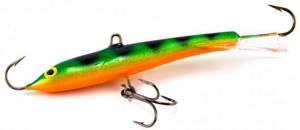
Scorana ICE FOX - When looking through the best balancers for pike in winter, you can’t help but notice this model. It offers excellent performance regardless of environmental conditions. The bait works in the current, in still water, at shallow and deep depths.

Lucky John Pro Series - A distinctive feature of the bait is the presence of an upper fin with three mounting holes. At the same time, the central one is intended for strict balancing, the hole located closer to the head makes the “fish” dive quickly, and the last mount complements the game with sweeping movements.
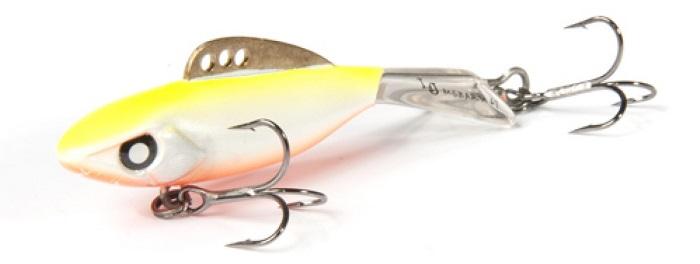
The best spinners
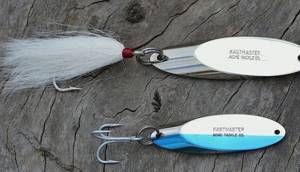
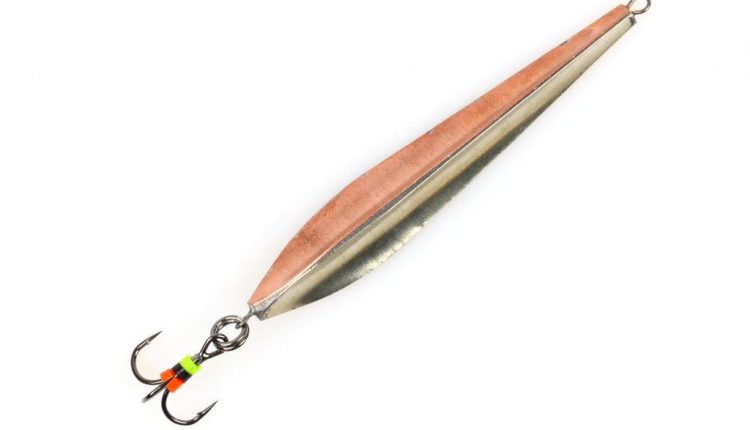
Read a more detailed rating of winter lures for pike here
Video: pike fishing in March
Regardless of the experience and experience of the fisherman, gear and bait, weather and other factors, the result of fishing is sometimes disappointing. It would seem that all the conditions were met, but something went wrong. There can only be one piece of advice here - patience, frequent fishing trips, searching for places with a good bite and, of course, practice.
Views: 482
Similar articles:
- Where to look for large pike in winter The less time remains before the onset of cold weather, the more diligently the fans...
- Pike in autumn: where to look, how and what to catch. Autumn pike feast Autumn is a busy time for pike fishing enthusiasts. U...
- Fishing for pike in the spring with a spinning rod Spring is a wonderful time of the year. Everything is blooming, awakening from the winter...
- Pike fishing in spring For many anglers, pike has always been considered the main trophy. Having caught a weighty...
How to choose depth?
The installation depth here should be very small. If in winter the girders were set at two meters or more, then here the fish can be caught practically squeezing between the soil at the bottom and the ice crust at the top, and not bad. Place at a depth of 0.5 to 1.5 meters. If you know the places where pike usually spawn, then be sure to choose an area near them for installation. The pike approaches them, hoping to spawn there, and gains strength before spawning. In the process, it drives away the fines. This is the reason for its attraction to shallow water - it is necessary to clear the territory so that it can give birth to offspring, and drive away everyone who might interfere with the eggs.
The harnesses must be installed with a leash. The amount of tuck here is usually taken quite strong. Pike usually grab live bait aggressively in the spring, drag it to the side and swallow it without hesitation. It is not necessary to run too fast to spot a predator. It is likely that she will detect herself.
The size of live bait for pike is determined based on the size of the fish. A common spring trophy is pike weighing up to 1 kg. It eats fish weighing one tenth of its own weight, but can also covet fish weighing two to three hundred grams. The optimal size of live bait for it is also a fifty-hundred-gram fish. If a larger beauty is biting somewhere, then it needs larger live bait, from one hundred to two hundred grams.
